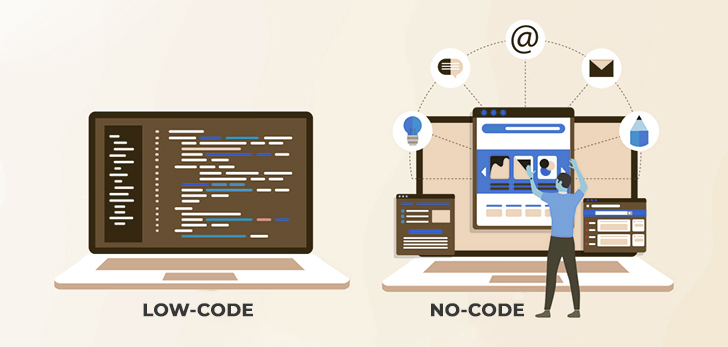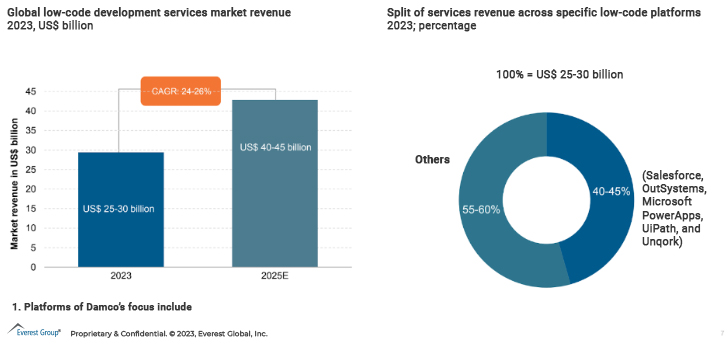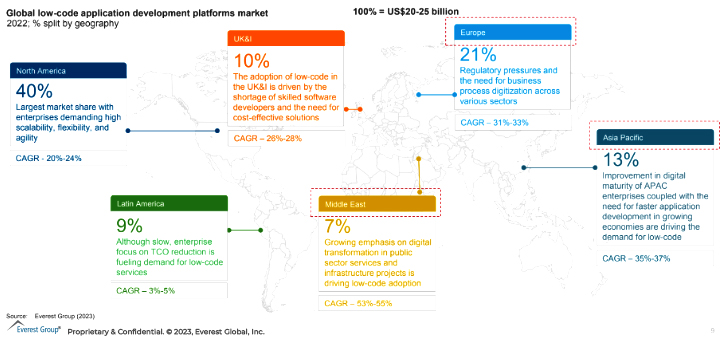In the fast-evolving corporate arena, the emergence of Low-Code and No-Code Platforms has proven to be an absolute game-changer for enterprises, irrespective of their scale. By harnessing the power of these innovative solutions, companies can now magnify their returns on investment and capitalize on significant savings. This article delves into the value proposition and key differentiators of Low-Code and No-Code Platforms, highlighting how they boost profitability and streamline operations.
Low-Code and No-Code Platforms Value Proposition
1. Accelerated Time-to-market
One of the most compelling advantages of these cutting-edge platforms is their ability to speed up application development cycles. Businesses can rapidly build and deploy software solutions, significantly reducing the time required to bring products and services to market.
2. Enhanced Cost-efficiency
Embracing Low-Code and No-Code solutions fosters cost-effectiveness, enabling enterprises to optimize their financial resources. These platforms present a broad spectrum of layers, eliminating the need for extensive developer teams, minimizing labor costs, and thus generating substantial savings.
3. Empowered Citizen Development
Low-Code and No-Code Platforms democratize software development by empowering non-technical staff to partake in creating applications. Individuals from different departments can collaborate to develop innovative solutions, fostering a culture of creativity and increased productivity.
4. Seamless Integration
Low-Code and No-Code platforms seamlessly integrate with existing systems and third-party applications. This interoperability ensures a smooth transition and facilitates the expansion of a company’s technological ecosystem without disruption.
Key Differentiators of Low-Code and No-Code Platforms
I. Flexibility and Customization
Flexibility and customization enable businesses to tailor their applications to precise specifications. This empowers them to meet the unique demands of their industries, customers, and internal processes, paving the way for optimized workflows.
II. Minimal Learning Curve
These platforms are synonymous with ease of use, allowing users to acclimate to their intuitive interfaces rapidly. As a result, companies are reducing the time required for training and onboarding, maximizing workforce efficiency.
III. Agile Iteration
The Agility of Low-Code and No-Code Platforms empowers businesses to iterate and update applications swiftly. This iterative approach allows enterprises to stay ahead of the competition, adapt to market shifts, and quickly respond to evolving customer needs.
IV. Heightened Security
Security aspects have paramount importance in today’s digital landscape. Low-Code and No-Code Platforms uphold this value proposition, offering robust security features and protocols that safeguard critical business data and protect against cyber threats.
How Can IT Services Companies Leverage the Capabilities of Low-Code and No-Code Platforms?
The primary mission here is to assist clients in maximizing the value of their IT cloud infrastructure investments. It’s easy to achieve this by constructing advanced workflow automation and data integration solutions. With Low-Code and No-Code Platforms, custom applications are rapidly delivered to suit each client’s unique needs.
Low-Code and No-code apps are truly enterprise-grade – secure, reliable, and scalable. The platforms deliver innovative solutions agilely, which may have been cost-prohibitive using traditional methods.
Low-code/no-code enables business resources and technical developers to concentrate on optimizing business processes and end-user experience. The result is a 10x increase in application development projects completed yearly.
Disruptive low-code platform solutions are leaders here because of their potential to accelerate digital transformation and resolve numerous business problems. We are witnessing a developing strategy within enterprises, giving rise to a new breed of developers to usher in agility. Low-Code combines the expertise of business analysts and developers as the development cycles become more efficient, bringing developers closer to the business and enhancing efficiency when the same person builds and implements the requirements. Thus, a new developer profile is emerging, promising more efficient application delivery.
I do observe the same trends. When I engage with our customers, I facilitate conversations to assist them in selecting the right low-code platform or specific vertical low-code platform-based solutions to accelerate their time-to-market.
What Challenges do We Foresee for Enterprise Applications Primarily Developed Using Low-Code and No-Code Platforms?
We need to consider aspects like security. How secure does the system need to be? How do you authenticate? Or how do you access core systems of record?
The other crucial aspect is scalability. You wouldn’t want a citizen developer building a solution with thousands of concurrent users and requiring 99% uptime.
Above all, low-code no-code embodies short development life cycles. Hence, we need to address the challenge of ensuring application quality. Standard code evaluation differs for most low-code and no-code platforms. Since there’s little code to evaluate, vendors incorporate new features in the platform, highlighting the breach of best practices, how specific queries are created, or if the user experience could lead to potential quality issues.
Establishing a Center of Excellence comprising a handful of personnel of hundreds for developing applications is one approach to extracting the ROI (Return on Investment) from the low-code platforms. Creating a centralized team that combines business personnel and low-code, no-code developers is likely a new trend. While it may present challenges currently, it is an issue that will be addressed over time.
In the rapidly evolving digital era, innovating and swiftly creating software applications is paramount for sustaining business competitiveness. Low-Code and No-Code capabilities have emerged as the catalysts for this transformation, enabling agile development and broader participation.
Damco’s Head of Low-Code and No-Code Solutions, Arnav Gupta, says:
“Banks and Insurance companies were already struggling with pre-crisis challenges such as low-profit margins, revenue pressure, and disruption caused by FinTech players. They may also face headwinds in the coming months to withstand the distress caused by both microeconomic and macroeconomic conditions. Therefore, it becomes imperative for banking institutions to address the knee-jerk reactions that come with three key areas to focus on – business process automation (BPA), adapting to Low-code to improve agility and stay resilient, and improving customer experience through intelligent chatbots.”
As we navigate the challenges of this dynamic landscape, it lets us recognize the potential within the Low-Code and No-Code approaches. We can harness these tools to convert challenges into opportunities and obstacles into stepping stones. The formula for sustainable success and growth lies in this synergy of technology and adaptability.








